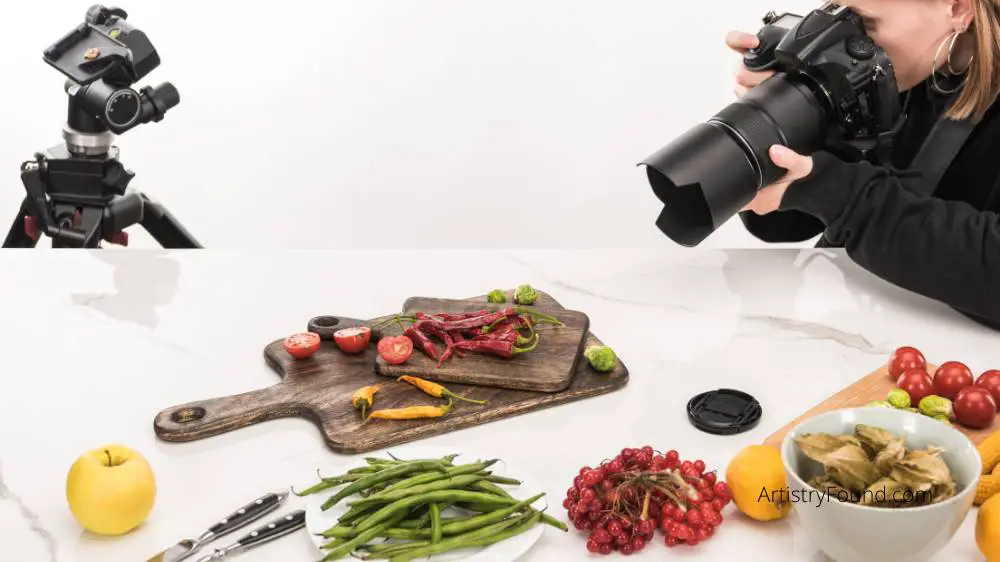Fine Art Photography vs Commercial Photography (What’s the Diff?)
Ever since the camera was invented, photography has quickly garnered attention as another art form. But the word photography is cunningly ambiguous and says very little about the activity. The ambiguity of this art form has left emerging artists wondering about the difference between fine art and commercial photography.
Commercial photography refers to a niche in photography where the photographer takes pictures mainly to sell a product, while a fine art photographer focuses on taking artistic shots. Depending on what you believe, these two photography forms can be intermixed.
This article was born to clear any doubts about these forms of photography. In this concise post, I’ll show you the meaning of both of these photography niches and the main differences between a fine art photographer and a commercial photographer.
What is Fine Art Photography?

(This article may contain affiliate links and I may earn a commission if you make a purchase)
There has been a lot of ambiguity and disagreement in defining what fine art photography is, and this is to be expected. After all, nobody has decided on a specific definition for fine art, and without defining fine art, how do you expect anyone to accurately describe fine art photography?
But by putting the consensus of the majority of fine art photographers together, we can come to an agreeable definition for this unique photography niche.
Unlike most other photography niches, fine art photography goes beyond trying to make a copy of a scene or subject in digital form. It is a form of photography that reproduces the ideas and emotions of the artist in a digital form.
While some photographers believe that all photography niches are related to fine art photography in some way, others opine that your photograph can only be artistic if they convey a deep emotional meaning.
There are many debatable ideas about fine art photography, but there is some consensus as well. For example, most people agree that fine art photographers come up with their own ideas.
If you were hired to take pictures of food by a restaurant, for example, you’re doing a different kind of photography, and this marks the major difference between fine art and commercial photography.
Fine art photographers earn by selling prints of their photographs, similar to what painters do. Artistic photographers can also work with blogs, magazines, or stock photo agencies to monetize their art.
There are so many different types of fine art photography that it’s impossible to list them all without leaving some out. Since most people consider every freelance photographer as a fine art photographer, you can refer to every image that isn’t a commercial photograph as a fine art photograph.
What is Commercial Photography?

Commercial photography can be somewhat similar or vaguely different when compared to fine art photography, depending on the metrics you’re using for comparison.
The main goal of a commercial photographer is to sell a product. Commercial photographs don’t necessarily carry any deep emotional message because they don’t need to.
The picture of a girl with perfect hair on a hair extension package or the picture of food that makes you salivate on a restaurant poster are both works of commercial photography. These pictures have commercial intent, as they want to make you interested enough in the products to buy them.
Contrary to what you might be thinking, commercial photographers also need as much creativity, if not more than fine art photographers.
While fine art photography is usually described as far-reaching, it’s very distinctive from commercial photography. Most commercial photographers aren’t referred to as fine art photographers and vice versa.
There are many categories of commercial photography, and you don’t have to be the jack of all categories.
You can become a food photographer and work with restaurants, or a product photographer that takes pictures of products for a specific company for commercials. You can also become a fashion photographer who takes pictures of models for everything companies use model images for.
There’s also e-commerce photography, which involves taking pictures of products to list on an online store. If, on the other hand, you’d rather take photographs of people, you can focus on professional portraits.
Fine Art Photography vs. Commercial Photography

There may not be a world of difference between these two photography styles, but they are understandably distinct. It may be difficult to differentiate two photography styles, especially when people can’t agree on the scope of each.
However, I’ll attempt the impossible and point out some of the most obvious differences between commercial photography and fine art photography to help you make a career choice.
1. Freedom to Create: Commercial vs Fine Art Photography
When comparing fine art photography to commercial photography, the freedom of fine art photographers is an important trait. As a fine art photographer, nobody dictates what kind of pictures you must take or where you should take them.
A fine art photographer can decide to work at any time without deadlines or schedules. However, if you don’t work hard to provide quality images, you’ll go hungry, even as a fine art photographer.
Commercial photographers, on the other hand, don’t have the same freedom as fine art photographers. Their freedom ends when they decide to stick to a particular niche—say fashion photography or food photography.
Once they decide to work in a particular industry, they must meet the demands of any company that requires their services. Instead of trying to communicate emotions, feelings, and ideas through their photographs, a commercial photographer will rather spend time understanding the product in question.
Also, they must work under the added pressure of specific deadlines and schedules. Furthermore, a commercial photographer has to create the image that the client wants rather than let their creativity run wild.
2. Monetization: Commercial Photography vs Fine Art Photography

Another major difference between fine art photographers and commercial photographers has to do with how they monetize their crafts. A photographer has a family to feed, so they don’t take pictures just for the fun of it; they need to earn money!
But the way they earn depends on their photography style. A commercial photographer has the most straightforward monetization strategy; they get paid to sell the copyright ownership of their photographs to the company that owns the products they’re marketing.
Generally, a commercial photographer will have a steadier income than a fine art photographer. Since most commercial photographers have contracts with companies that pay them to regularly take photographs, they usually get steady pay while they work as part of the company or on a freelance basis.
Fine art photographers, however, make almost all of their income by licensing their photographs for commercial or editorial uses, or by selling them as fine art prints. All photographers sell their images, but artistic photographers often license their images on stock photo websites to blogs and magazines that may require that kind of image.
A difference, however, is that most fine art photographers never lose the copyrights to their photos. While people pay for the license to use the photos commercially, they can usually sell them multiple times without losing ownership of the photo, unlike many commercial photographers.
Is Fine Art Photography Better than Commercial Photography?
Comparing photography niches is somewhat unfair. Many photographers do quite well in fine art photography, and many commercial photographers also get paid quite well. The photography style you end up choosing depends on what’s most important to you as a photographer.
If you want a guaranteed monthly paycheck, commercial photography is probably your best bet. You’ll likely work as part of a company, and you’ll likely be paid more consistently than an artistic photographer selling to stock websites.
If you prefer to have control over what you produce as a photographer, fine art photography is the superior option.
